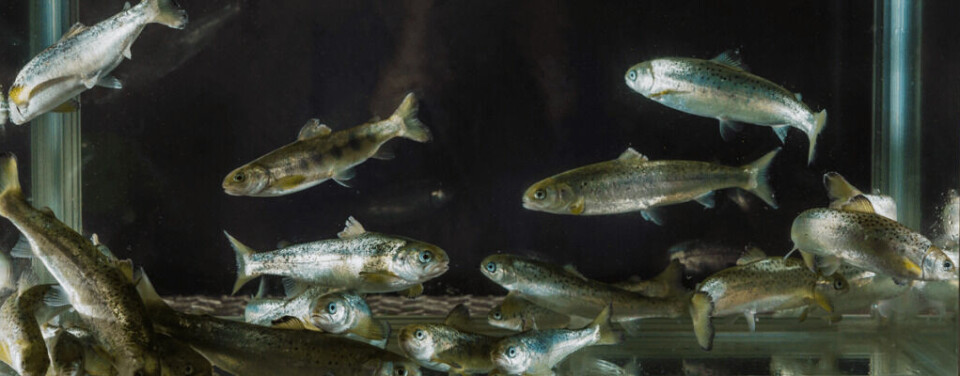
Study to look at closed in-sea ‘nurseries’ for salmon
The use of closed containment in-sea "nurseries" to grow salmon and trout up to 1kg is to be investigated in a project commissioned by the Scottish Aquaculture Research Forum (SARF).
In-sea closed containment would have the same advantage as land-based recirculating aquaculture systems (RAS) in keeping fish free of sea lice, but might also be cheaper than land-based facilities and have the potential for greater biomass.
SARF also points out that it might be possible to set up in-sea closed containment nurseries in areas where it is impractical to site facilities on land.
10 months in open cages
It envisages final fish growth in open net pens being reduced to 10 months, with a further six to eight weeks' fallowing, allowing net pen sites to have a one-year turnover.

The £70,000 contract for the nine-month study has been won by the University of Stirling's Institute of Aquaculture, which will carry out the work with other partners.
John Bostock, senior consultant at the Institute of Aquaculture, said: "We're pleased to have won the contract and we're looking forward to working with SARF and the industry on this project."
Bio-secure water input
In its Call for Proposals document setting out the basis for the study, SARF states that as well as allowing for greater for volumes to be accommodated, closed containment sea-pen use might offer:
- Reduced energy/cost required for pumping seawater compared with land-based RAS
- Bio-secure water input in terms of infective planktonic stages of sea lice, by way of abstraction from deeper water or through other forms of intervention – filtration, disinfection
- Inherent natural water temperature control (seasonal temperature control can be a cost factor in land-based RAS)
- Utilisation of (some existing) sheltered, near-shore locations since untreated wastes will not be released directly to the environment, and exchange will be provided by pumping rather than relying on natural water flows.
- Consequent access, shore connection and servicing ability advantage over ‘normal’ sea pen sites to maximise security and production efficiency, where cage systems could incorporate weather-related shielding/mitigation design free of its impacts on water exchange.
It adds: "SARF requires theoretical but well-evidenced research that investigates the technical and economic feasibility of incorporating fully closed containment sea pen systems within the overall production process for Atlantic salmon and marine-grown rainbow trout in Scotland."
Maximise gains from non-pharmacological sea-lice controls
The SARF document states: "The overarching goal of this research is to ascertain whether partial closed containment marine production, in conjunction with larger smolts / juveniles from freshwater, could lead to a situation where open pen marine final on-growing can be undertaken on sites with an ability to have a 6 to 8 week fallow period every calendar year. In effect reducing open pen use to circa 10 months per generation stocked, grown and harvested.
"This would allow the period of greatest fish weight production to be on open-pen sites with the necessary flushing and exchange to accommodate it, but able to fallow more frequently. This could maximise the gains from non-pharmacological sea-lice controls, while helping retain their efficacy if and when required. Reduced reliance will also allow more confident exploitation of modelled biomass limits."
SARF adds that the successful applicant will be expected to incorporate the British Trout Association (BTA) and the Scottish Salmon Producers Organisation (SSPO) within their project ‘team’.
The study is co-funded by Marine Scotland and Crown Estate Scotland.






















































